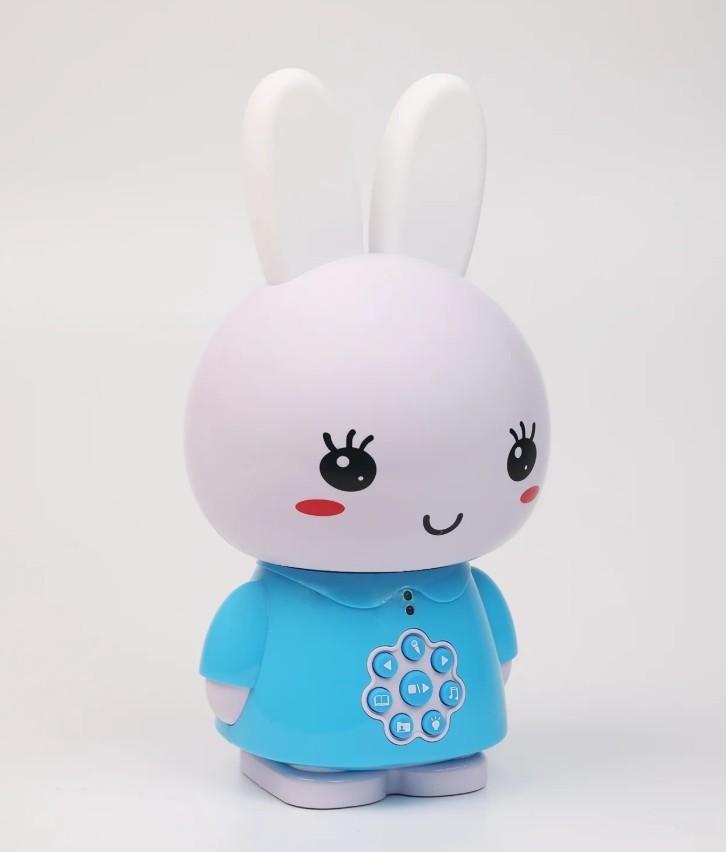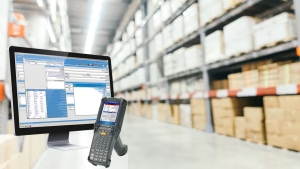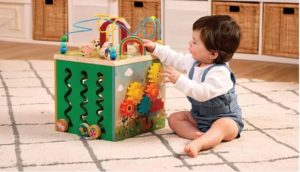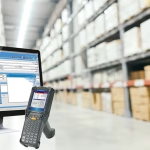Last Updated on May 16, 2025 by Muhammad Ramzan
Battery corrosion in children’s toys may harm pricey electronics and cause health dangers. Parents often find this issue too late when a toy stops operating or reveals white powder within the battery compartment. Understanding what causes this damage may help you save money while also keeping your toys safe. This blog investigates why batteries deteriorate, what causes leaking, and how to manage and avoid it. If you are coping with this problem, you are not alone. Let’s go over everything parents need to know about protecting their children’s favorite devices and how to remove battery corrosion in toys properly and safely.
What Is Battery Corrosion and Why It Happens?
What Battery Corrosion Looks Like in Toys
Battery corrosion often shows as a chalky white, greenish, or blue material around the battery connections. It may appear as powder, flakes, or crust and is often accompanied by a bad odor. Corrosion in children’s toys may disrupt electrical contact, causing the device to cease operating. This residue may spread within the battery compartment, destroying metal components and plastic housing. If not cleaned promptly, the damage might be irreversible. Regular examination of battery locations helps to detect corrosion early. Recognizing what it is is the first step toward taking prompt action to clean it up and avoid additional damage to the toy.
Chemical Reaction Inside Batteries
Battery corrosion occurs when chemicals seep from the battery cells. Alkaline batteries contain potassium hydroxide, which may leak if the battery shell cracks or deteriorates. When this chemical mixes with carbon dioxide in the air, it produces potassium carbonate, a white, flaky material. This is the corrosion that you notice on the terminals. The internal pressure of the battery increases with time, particularly if it is abused or stored in hot temperatures. The pressure might cause the seal to rupture and caustic substances to be released. The reaction also destroys the metal connections, breaking the electrical circuit and leaving the toy useless.
Environmental Factors Affecting Corrosion
Heat, humidity, and poor storage all lead to rapid battery deterioration. Toys left in hot automobiles or damp basements offer an ideal environment for chemical leaks. High temperatures raise the internal pressure of the battery, increasing the risk of rupture. Moisture accelerates the chemical reaction by injecting water into the mix, allowing for the rapid spread of corrosive residue. Frequent temperature changes, such as those seen in attics or garages, may also cause battery seals to fail. Toys stored in dry, climate-controlled conditions may dramatically minimize the danger of corrosion and increase battery life.
What Causes Batteries to Leak in Children’s Toys?
Leaving Batteries inside Unused Toys
Leakage is more likely to occur when batteries in a toy are left unattended for months. Batteries continue to discharge slowly even while not in use. Gas accumulates within the battery as a result of this self-discharge, which applies pressure to the case. Leakage might result from the seal breaking if the pressure becomes too high. Numerous toys that run on batteries are left inactive since children often switch between them. Over time, these neglected batteries slowly deteriorate. Parents should take the batteries out of toys that aren’t used often to avoid this. It’s an easy practice that may prevent chemical harm to the toy and the environment.
Mixing Different Battery Types or Brands
Using batteries from multiple brands or combining old and new ones in a toy might result in uneven discharge rates. This imbalance causes certain batteries to work harder, resulting in overheating or leaking. When one battery depletes before the others, it may reverse charge, resulting in internal chemical breakdown. Different chemistries may also interact adversely, resulting in increased gas and pressure inside the compartment. For this reason, most manufacturers advocate utilizing identical types and ages of batteries. Sticking to a single brand and changing all batteries at the same time helps to preserve toy performance while lowering the chance of corrosion and leakage.
Using Expired or Cheap Batteries
Batteries that have expired or are of poor quality are more likely to leak owing to weak internal structures. As batteries age, their interior seals deteriorate, allowing chemicals to leak. Cheap companies often incur costs in manufacturing, utilizing low-quality materials that cannot withstand extended usage or environmental impact. Even when properly kept, these batteries have the potential to leak. Check the expiry dates before adding batteries to a child’s toy. Investing in high-quality, name-brand batteries may cost more upfront, but it helps protect costly or treasured products. Better batteries operate consistently and last longer.
How to Clean and Repair Battery Corrosion?
Tools and Materials Every Parent should Have
Obtain the following common home products to properly clean battery corrosion: cotton swabs, paper towels, a toothbrush, safety gloves, white vinegar or lemon juice. The battery compartment may need to be opened using a little screwdriver. A pencil eraser or baking soda paste might be used to assist in removing residue in more difficult circumstances. It’s critical to operate in an area with enough ventilation and to keep cleaning supplies out of children’s reach. When corrosion develops, having these supplies on hand enables you to act fast. The toy may be saved, and more chemical distribution to other parts can be avoided by promptly cleaning minor corrosion.
Safe Steps to Clean Battery Corrosion at Home
Initially, don mitts and extract the batteries that have been damaged. Dip a cotton swab into white vinegar or lemon juice to prevent corrosion. Massage the affected areas gently until the residue is eliminated. Utilize a dry paper towel to eliminate any remaining moisture. Gently rub the affected areas with an outdated toothbrush. If you are installing new batteries, ensure that the chamber is completely dried. This is a simple and secure way to store your kids’ toys. Visit official battery care websites or product manuals for detailed safety guidelines on how to clean battery corrosion in toys.
When to Repair Vs. When to Replace The Toy
If the rust is limited to the battery connections and has not been extended to the internal wiring, the toy may frequently be cleaned and restored. However, if the corrosion has melted plastic components, ruined circuit boards, or left a persistent chemical stench, replacement may be a safer option. Before making a decision, think about the toy’s worth and emotional relevance. Expensive toys that are just corroded may be salvageable. Replacement may be a faster and less expensive option for inexpensive toys. Before reusing a toy, always consider the repair time, material cost, and safety.
How to Prevent Battery Corrosion in Toys?
Proper Storage and Maintenance Habits
Keep toys in cool, dry spaces away from direct sunlight and significant temperature fluctuations. Turn off battery-powered toys after playing to prevent needless depletion. Make it a habit to inspect battery compartments weekly for indications of wear, particularly if the toy hasn’t been used in a while. Remove the batteries from seasonal or infrequently used products. Label storage containers based on how often toys are used so you can rotate them and check batteries on a regular basis. To avoid accumulation, clean your contacts on a regular basis using a dry cloth. These easy behaviors may significantly minimize battery deterioration and increase the longevity of your child’s favorite electrical devices.
Battery Safety Tips Every Parent should Follow
Always install batteries according to the manufacturer’s instructions. Make use of the proper kind and size, and organize them appropriately. Don’t mix new and old batteries. Batteries should be kept out of children’s reach and in their original package. Recharging disposable batteries might cause them to burst. To guarantee consistent operation, change all of the batteries at once. Never throw old batteries in the trash or fire. Instead, dispose of them appropriately. Watch for any signs of a bulging or leaking battery and act promptly. By adhering to these safety guidelines, toys remain functional and unanticipated corrosion is avoided.
Long-Term Care: Use Battery-Free Alternatives
For long-term peace of mind, consider toys that do not need batteries. Classic alternatives such as building blocks, puzzles, and wind-up toys provide imaginative play without the danger of corrosion. Rechargeable toys with built-in power systems may be more dependable and environmentally friendly. If your kid uses electronic toys often, choose ones powered by USB or solar energy. These solutions save chemical waste while simplifying maintenance. Limiting the number of battery-operated toys in the house allows parents to save time and money and offers
Conclusion
Children’s toy battery corrosion is a common but avoidable problem. This issue is exacerbated by battery use, inappropriate storage, and chemical spills. By understanding the reasons for corrosion, following safety precautions, and acting promptly in the event of an issue, parents can protect their kids’ toys. You may prevent a beloved device from ending up in the garbage by learning how to clean toys with corroded batteries. Simple routines like routine battery inspections and appropriate storage have a significant impact. Use safe cleaning techniques and high-quality batteries as necessary. Toys may last longer, function better, and remain safe for little hands to play with if they are properly maintained.











